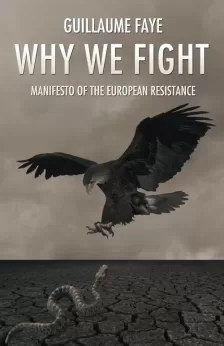Central to the New Right’s critique of the modern world and liberalism is the relation of these two to identity. Liberalism is an enemy of identity, partly because it has no regard for anything not individual. Liberalism is, in practice, a universalism that produces rootless “individuals” even where there were none previously.
In opposition to this, the New Right champions the right to difference and groups possessing long memories. The way the New Right views culture is greatly influenced by the German philosophical anthropologist Arnold Gehlen. Gehlen held that mankind is different from other animal species in that we create for ourselves a “second nature”: a culture. This is on account of the inadequacy of man’s instincts in handling the world. Remove culture and little will remain of the qualities we generally perceive as human. Culture is the sum of this second nature, which entails its being in a constant state of evolution. We constantly learn new things and re-evaluate things we learned before, causing our culture to evolve. However, this evolution always happens against the background of the current culture: anything novel that we encounter, we interpret using that very culture we have already obtained. This is an organic and metamorphic view of culture, distinct from the liberal’s hatred of custom and tradition, as well as the unchanging, monolithic ideal culture of hypothetical arch-reactionaries.
The New Right, influenced by Heidegger, argues that we are authentic, true to ourselves, when we are living our culture. Our culture provides us with models for a good life, and it is when we incarnate these age-old role models in our own time, with our kin, that we are true to ourselves and that our lives become truly meaningful. Culture gives us meaning and explains to us who we are and why we are here; our culture provides us with an identity.
Connected to this emphasis on different cultures and identity is ethnopluralism, or “the right of peoples.” This means that ideas like “the human race” and “human rights” are largely vacuous concepts, considering that the qualities that make us human are rooted in culture and that humans do not have one single culture but innumerable ones, each different from the other. This is where the concept of bioculture enters, which is not reducible either to biological race or the civic nationalist understanding of culture. The future envisioned by the New Right is one in which the European and European-descended peoples in the New World have regained their will to live and their long memories. Long memories have been preserved within the culture since time immemorial and have repeatedly inspired great efforts throughout their history. This is not a case of nostalgic longing for anything outside reality or one’s present time, but rather it is about living these memories like they are lived time and time again with each new generation. In this way, our long memories are always oriented toward the future, and they will live on as long as there are Europeans. This view is called archeofuturism—a useful concept that the ever-creative Guillaume Faye has further elaborated on in his book of the same title. In this work, Faye espouses a synthesis between archaic values and futuristic technology. It is not very reminiscent of Evola or Klages but more so of Nietzsche and Locchi. Faye explains his philosophical starting point as “vitalist constructivism” and delineates a fascinating future, which includes high technology as well as small-scale organic farming.
The anthropology of the New Right is not monolithic and has shifted over time. Originally, it was influenced by the life sciences, including sociobiology, ethology, and human genetics (parts of the latter are now sometimes termed HBD, human biodiversity, but more on that later). This placed the views of the New Right in proximity to those of Hans Eysenck and Konrad Lorenz. Since then, de Benoist and others have gradually approached a more sociological anthropology, distancing themselves from the biological. De Benoist today opposes theories of race in which some groups are viewed as inherently inferior to others. Other parts of the New Right, however, have not shifted their focus in the same way de Benoist has and have continued developing their anthropology in a sociobiological direction. The differences between the outlooks are gradual, and the most valuable contribution by the New Right to the field is the synthesis of biological and cultural sociology, termed bioculture. This is reminiscent of Klages and Woltmann’s insight that some human types are continually excluded from the gene pool of some societies in a self-increasing process. In a culture in which profit is valued over all else, dreamers and warriors are not the ones to become the most successful. With time, genetics shape cultures, and vice versa. The New Right prefers to be described as ethno-differentialist rather than “racist,” seeing as their views are in no way about hatred but about recognizing and valuing the differences of different groups. In comparison, so-called anti-racists are most often unable or unwilling to acknowledge any such differences and disregard even the most unambiguous scientific evidence.
A degree of disparity also exists among the New Right’s views on the multi-ethnic Europe that is the result of decades of mass immigration. De Benoist does not see out-and-out repatriation as a realistic option, proposing instead a public policy marked by recognition of groups. His solution is not Jacobinesque assimilation and homogenization but, conversely, a policy more reminiscent of the Hegelian concept of mutual recognition as well as German sociologist and historian Henning Eichberg’s Minderheit und Mehrheit (minority and majority). The current state of affairs, in which the very existence of groups is denied and silenced, is bewildering and unsustainable. Others within the movement instead propose repatriation, considering that the multiethnic society otherwise will lead to civil war and, ultimately, to the demise of the European peoples.










This is fascinating. I will be hunting down Arnold Gehlen’s work later today!